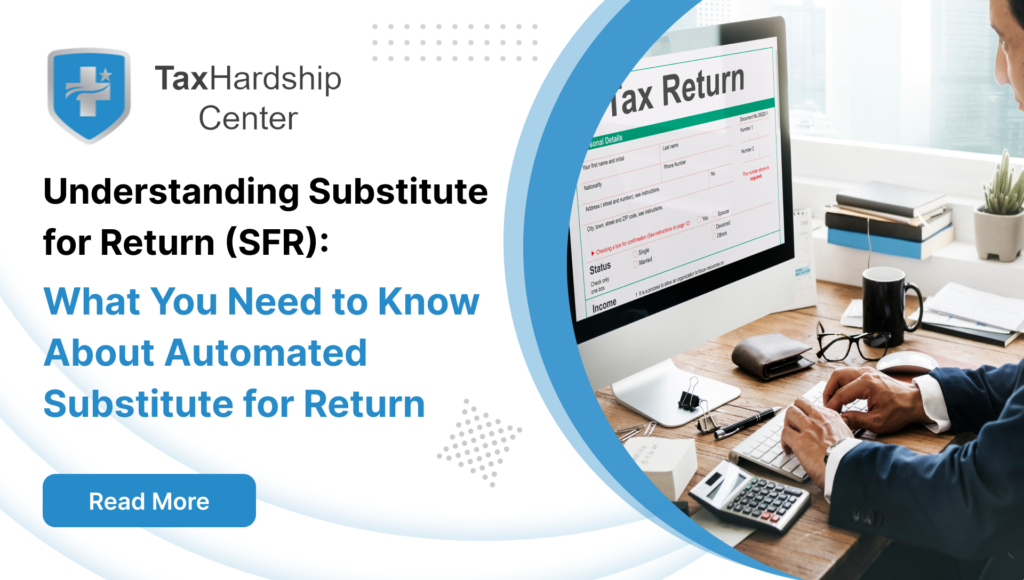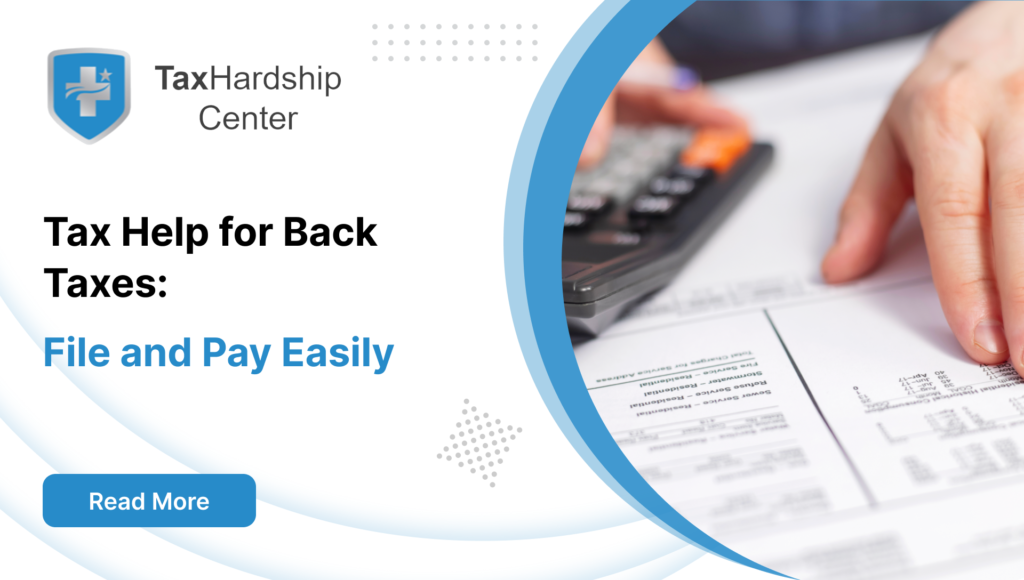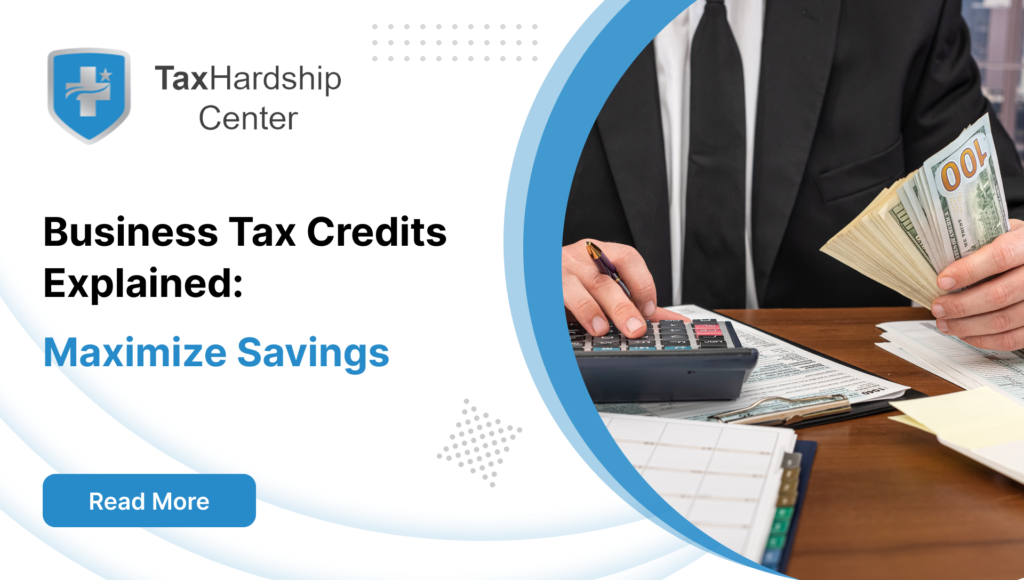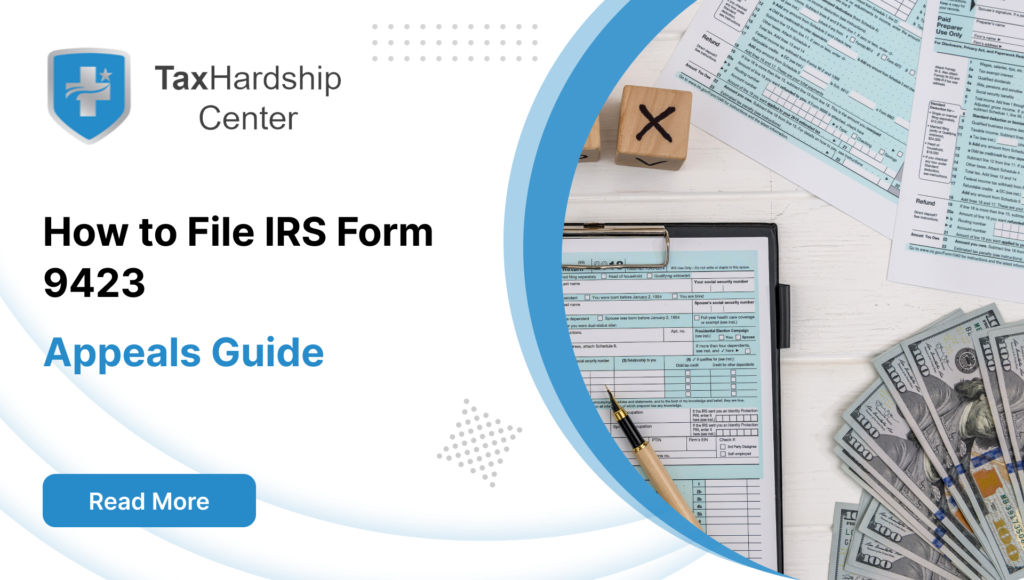Navigating the intricacies of tax filing can be daunting, especially when faced with terms like Substitute for Return (SFR). Whether you’re familiar with tax procedures or not, understanding what an SFR entails is crucial for every taxpayer. In this comprehensive guide, we’ll delve into the intricacies of the automated substitute for Return process, exploring its significance, pros and cons.
What Is a Substitute for Return?
The Substitute for Return (SFR) is a tax return filed by the Internal Revenue Service (IRS) when taxpayers neglect their obligation to file their returns. This is not a service provided by the IRS out of courtesy but a mechanism to ensure tax compliance and assess the tax liability of noncompliant taxpayers.
The SFR process involves the IRS estimating a taxpayer’s income based on available data, such as W-2s and 1099s. The IRS then calculates the tax owed based on this estimated income. However, it’s important to note that the SFR has certain limitations:
- Absence of Deductions: The SFR does not consider potential deductions for which the taxpayer may be eligible. This could include business expenses for self-employed individuals or mortgage interest for homeowners.
- Exclusion of Credits and Exemptions: The SFR does not factor in any tax credits or exemptions for which the taxpayer may qualify. This could lead to a higher tax liability than a personally filed return.
As a result, the tax liability determined by an SFR can be significantly higher than what the taxpayer would have owed if they had filed their return. Therefore, it’s always advisable for taxpayers to file their returns to ensure they benefit from any deductions, credits, or exemptions they’re entitled to. This ensures compliance with tax laws and potentially reduces their tax liability.
How Tax Hardship Center Eases Tax Concerns
Tax Hardship Center specializes in providing tailored solutions for individuals and businesses facing tax challenges, including those related to Automated Substitute for Return (ASFR) filings. Our dedicated team understands the nuances of ASFR processes and crafts personalized strategies to address your specific tax dilemmas effectively. Whether negotiating installment agreements or exploring avenues to minimize tax burdens, we leverage our expertise to alleviate financial strains and promote stability for our clients. Trust Tax Hardship Center to navigate the complexities of tax obligations and guide you toward a brighter financial future. Schedule a free consultation now.
What Causes the IRS to File an SFR?
The Internal Revenue Service (IRS) may file a Substitute for Return (SFR) when a taxpayer fails to file their return by the stipulated deadline despite being legally obligated. Several triggers alert the IRS to the possibility that a taxpayer may need to file a return:
- Income Documents: The IRS receives employment documents such as W-2s and 1099s. These documents provide information about a taxpayer’s earnings, which can indicate a tax liability.
- Third-Party Reporting: Banks, brokers, and other financial institutions also submit reports about taxpayers’ financial activities to the IRS. These reports can include information about interest earned, stock transactions, and other income-generating activities.
- Discrepancies in Reported Income: If there are discrepancies between the income reported by employers or financial institutions and the income reported (or not reported) by the taxpayer, the IRS can initiate the SFR process.
If these income reports suggest a tax liability and the taxpayer still needs to file a return, the IRS may begin the SFR process. This process is designed to ensure tax compliance and assess the tax liability of noncompliant taxpayers. However, it’s important to note that the SFR is not a substitute for a personally filed return, as it may not account for all deductions, credits, or exemptions a taxpayer is entitled to. Therefore, it’s always advisable for taxpayers to file their returns to ensure they’re not overpaying on their taxes.
Who Prepares IRS SFRs?
The IRS prepares substitutes for returns (SFRs) to ensure compliance with tax filing requirements. Here’s how the process works:
- Automated Systems: Most SFRs are generated through the Automated Substitute for Return (ASFR) system, which uses reported income data.
- IRS Personnel Involvement: IRS staff may manually prepare an SFR for more complex tax situations. This is particularly true when the automated system cannot fully comprehend taxpayers’ financial circumstances.
- Comprehensive Review: Manual preparation involves thoroughly reviewing all available information to construct an accurate tax assessment.
- Taxpayer Notification: Once an SFR is prepared, the IRS notifies the taxpayer, providing an opportunity to file a correct return or dispute the SFR.
The goal of SFRs is not to penalize but to provide a tax assessment based on available information. Taxpayers are encouraged to file their returns to ensure all information is considered and potentially reduce their tax liability.
Exploring the Automated Substitute for Return (ASFR)
The Automated Substitute for Return (ASFR) program is a critical mechanism that the Internal Revenue Service (IRS) employs to address the issue of non-filing taxpayers. When individuals fail to file a tax return despite a filing requirement, the ASFR acts as an enforcement activity to promote compliance with tax laws.
Data Collection and Informational Inputs:
The ASFR system begins by aggregating income data from various sources. This income information is typically compiled from documents such as W-2 and 1099 forms submitted to the IRS by employers, banks, and other financial institutions. These forms report the income an individual has earned and any taxes that may have already been withheld. By collecting this data, the IRS can obtain a comprehensive overview of an individual’s financial earnings for the year.
Calculation Method Employed by ASFR:
Once the income data is compiled, the ASFR program utilizes a standardized approach to calculate the tax owed by the individual. This calculation involves applying the standard deduction—a set amount that reduces the amount of income subject to federal income tax—and factoring in a single personal exemption, further lowering the taxable income.
Limitations and Shortcomings of the ASFR Process:
One significant limitation of the ASFR process is that it does not consider additional exemptions, deductions, or tax credits for which the taxpayer may be eligible. Many taxpayers have unique financial circumstances, such as mortgage interest deductions, education expenses, charitable contributions, or child tax credits, that could substantially decrease their tax liability. Unfortunately, since the ASFR only utilizes a basic formula, these potential savings are not reflected in its calculations.
The Higher Tax Liability Resulting from ASFR:
Due to its limited scope and conservative estimation approach, the tax liability calculated by the ASFR program is frequently higher than what would be determined if the taxpayer filed a complete and accurate return. This substitute return produced by the ASFR does not benefit taxpayers from maximizing their lawful tax deductions and credits.
Implications for Taxpayers and the Importance of Personal Tax Returns:
Taxpayers should be keenly aware that the ASFR-generated assessment is a preliminary tool used by the IRS to encourage compliance and is not representative of their proper tax obligation. Individuals are strongly encouraged to file tax returns to ensure that all eligible tax benefits are received and to prevent any overpayment of taxes. Filing a personal tax return allows taxpayers to paint a complete financial picture, accounting for family size, specific deductions, credits, and other factors that could influence their tax situation.
The ASFR’s Role as a Compliance Prompt:
The purpose of the ASFR is dual; while it does lead to an assessment of tax owed for non-filing taxpayers, it also serves as an impetus for taxpayers to engage with their tax responsibilities. The ASFR is a reminder that the IRS is aware of the income earned and that filing a tax return is an obligation and an opportunity to ensure a fair and accurate tax payment. By prompting taxpayers to file, the IRS aims to deter future non-compliance and foster an environment where all taxpayers meet their legal requirements wholly and punctually.
The Pros of Automated SFR
Automated Substitute for Return (SFR) systems, such as the one employed by the IRS, have several advantages:
1. Encourages Tax Compliance: The primary purpose of the ASFR is to promote tax compliance. It is a deterrent for individuals who might otherwise choose not to file a tax return. Knowing that the IRS has the means to estimate and assess taxes owed can motivate taxpayers to file timely and accurate returns.
2. Protects Government Revenue: By using the ASFR to estimate tax liabilities for non-filers, the IRS ensures that the government collects at least a portion of the taxes owed. This process prevents potential revenue loss from individuals who do not file.
3. Reduces Administrative Burden: Automating the SFR process helps to reduce the IRS’s administrative workload and resource expenditures. This is particularly important given the volume of non-filers the IRS must manage yearly.
4. Provides a Basis for Collection Actions: The ASFR creates a tax assessment that the IRS can use as a basis for collection actions. With such an assessment, the IRS could levy wages, place liens on property, or take other collection measures against non-compliant taxpayers.
5. Increases Efficiency: Automated systems are generally faster and more efficient than manual processing. The ASFR allows the IRS to handle large numbers of non-filers in a relatively streamlined manner.
6. Facilitates Taxpayer Notice: Taxpayers receive notices indicating that a Substitute for Return has been prepared. This serves as an alert to the taxpayer, allowing them to file an accurate return if they wish to adjust the assessment made by the ASFR.
7. Reduces Potential for Human Error: Because the ASFR is based on predefined rules and algorithms, it may reduce the chance of human error, which can occur with manual tax assessments.
The Cons Of Automated SFR
The Automated Substitute for Return (SFR) process, while useful for IRS compliance efforts, also presents several disadvantages, particularly from the taxpayer’s perspective:
1. Overestimation of Tax Liability: The ASFR system uses a basic formula that does not consider additional deductions, credits, and exemptions that taxpayers may be entitled to claim. This often results in overestimating the taxpayer’s tax liability, leading to a higher tax bill than if the taxpayer had filed their return.
2. Loss of Tax Benefits: By not accounting for tax breaks such as education credits, mortgage interest deductions, and child tax credits, taxpayers miss out on significant savings and benefits that could reduce their tax obligations or even result in a tax refund.
3. Limited Taxpayer Representation: The ASFR does not reflect individual taxpayer circumstances and financial nuances. It treats all non-filers uniformly, disregarding personal or economic hardships that could affect their ability to pay or their eligible deductions.
4. Potential for Increased Penalties and Interest: When the IRS prepares an SFR, the calculated tax liability often includes additional interest and penalties for failure to file and pay. Thus, the taxpayer may be subjected to an enormous debt owed to the IRS.
5. Difficulty in Resolving Disputes: Once an SFR has been processed and the tax assessed, the taxpayer may find it challenging to dispute the assessment or to provide substantiation for deductions and credits not initially considered. The process of amending an SFR can be complex and time-consuming.
6. Reduced Appeal Process: Unlike an average return where taxpayers submit information and can easily interact with the IRS regarding their return, the SFR process could be more transparent and offer more direct communication. This often makes resolving issues more difficult for the taxpayer.
7. Potential for Subsequent Legal Action: An SFR may lead to more aggressive IRS collection activities, including liens, levies, and garnishments. The taxpayer might face legal action more quickly as the IRS moves to enforce the assessed tax liabilities determined by the ASFR.
8. Can Lead to Uncertainty and Stress: Receiving notice of an SFR can be distressing for taxpayers, especially if they need to be made aware of the process. It can lead to uncertainty, fear of financial repercussions, and a feeling of losing control over their financial affairs.
9. May Not Account for Recent Tax Law Changes: Automated systems might only sometimes be immediately updated to reflect recent changes in tax law, which could result in incorrect calculations if new deductions or credits are not included.
Does the IRS Prepare SFRs Outside the ASFR Program?
Indeed, the IRS is not limited to the Automated Substitute for Return (ASFR) program when preparing SFRs. In some instances, the IRS may opt for a manual approach. Here are key points to understand about this process:
- Complex Tax Situations: The IRS resorts to manual preparation of SFRs for complex tax cases beyond the scope of the ASFR program’s capabilities.
- Individual Attention: These cases receive individual attention from IRS personnel to ensure accurate tax liability assessment.
- Taxpayer Notification: If you’re involved in such a scenario, you will be notified of the SFR and allowed to file your return.
- Professional Advice: Given the complexity of these situations, it is highly recommended that you consult with a tax professional to navigate the process and explore all available options.
This manual intervention underscores the IRS’s commitment to tailoring its approach to each taxpayer’s unique circumstances.
Conclusion:
In conclusion, while the Automated Substitute for Return (ASFR) process may seem bureaucratic, its implications can significantly impact your tax liabilities and financial well-being. Being proactive about your tax obligations, staying informed, and taking timely action is crucial to navigating the complexities of tax filing. Remember, filing your tax return ensures compliance with tax laws and allows you to take advantage of deductions and credits that can lower your tax burden. Don’t let the ASFR catch you off guard—stay informed, take control of your tax affairs, and seek professional guidance when needed.
Why Tax Hardship Center?
1. Hassle-Free Assistance:
Say goodbye to sleepless nights and endless tax-related stress. At the Tax Hardship Center, we believe in simplifying the complex. Our team of experts is dedicated to guiding you through every step of the process, ensuring that your tax concerns are met with precision and care.
2. 14-Day Money Back Guarantee:
We’re so confident in our ability to ease your tax worries that we offer a 14-day money-back guarantee. If, for any reason, you’re not satisfied with our service, we’ll gladly refund your investment. Your peace of mind is our top priority!
3. Free Consultation:
Are you curious about how we can transform your tax experience? Book a free consultation now! Our team will assess your situation, answer your questions, and provide free insights tailored to your needs.
4. Nationwide Coverage:
No matter which corner of the United States you call home, the Tax Hardship Center covers you. We proudly serve all 50 states, bringing our expertise to your doorstep. Wherever you are, our commitment to excellence follows.
FAQs:
1. What is a Substitute for Return (SFR)?
An SFR is a tax return filed by the IRS on a taxpayer’s behalf when the taxpayer neglects to file their own return. It’s essentially an estimate of your tax liability based on the information the IRS has about your income.
2. Why does the IRS file an SFR?
The IRS uses the SFR program to enforce tax compliance and collect at least some of the taxes owed by non-filing taxpayers.
3. How does the ASFR system work?
The ASFR system gathers income data from various sources like W-2s and 1099s. It then calculates a tax liability using a standard deduction and a single exemption. This often results in a higher tax bill than what a taxpayer would owe with a proper return.
4. What are the advantages of the ASFR program for the IRS?
- Encourages tax compliance
- Protects government revenue
- Reduces administrative burden
- Provides a basis for collection actions
- Increases efficiency
- Facilitates taxpayer notice
- Reduces potential for human error
5. What are the disadvantages of the ASFR program for taxpayers?
- Overestimation of tax liability
- Loss of tax benefits
- Limited taxpayer representation
- Potential for increased penalties and interest
- Difficulty in resolving disputes
- Reduced appeal process
- Potential for subsequent legal action
- Can lead to uncertainty and stress
- May not account for recent tax law changes
6. Does the IRS only use the ASFR program?
No, the IRS may prepare SFRs manually for complex tax situations.








